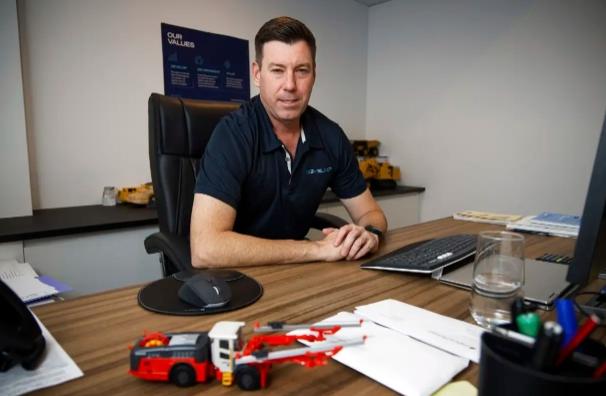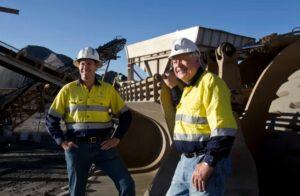Australia’s Next Great Mining Story Faces Its Greatest Threat
Amidst the deluge of new underground mine plans and extensions announced by Australia’s miners, the industry faces an imminent crisis due to reaching its bursting point, leading to a severe skills shortage.
Australia’s underground mining expertise stands unrivaled globally; however, the industry’s future is jeopardized by years of under-investment and contractors compelled to operate on precarious profit margins.
With Australian miners unveiling a flood of proposals for new underground mines or extensions, the industry has reached a breaking point and is expected to face a significant shortage of skilled labor in the forthcoming years.
According to Bill Beament, the visionary behind the transformation of Northern Star Resources into a $10 billion gold company, the current situation reflects a lack of investment in skills development for underground mining. For over a decade, most of the focus has been on open pit mines, but now a surge of miners is poised to venture into the underground domain.
Bill Beament points out that in the past, Western Mining Corp was the last major company successful in training and developing underground personnel. However, it was later acquired by BHP in 2005.
“WMC established the underground playbook that continues to be widely adopted today: from the payment manual and contract structures to the actual development methods for underground mines – all of it originated from Western Mining. The expertise of underground managers who once worked in WMC’s mines, particularly in Kambalda and other locations, played a pivotal role in shaping the contracting landscape as we know it.”
The mining industry has undergone a division. Major players such as BHP, Rio Tinto, and Fortescue Metals Group are focused on large, tier one, long-life projects, primarily open pit operations. They possess the financial strength to invest in training the upcoming generation of open pit operators, maintenance workers, technical experts, and other essential roles.
Much of the underground work, primarily undertaken by non-major players, has been outsourced to contractors. The two prominent contractors in this domain are Barminco, established by WMC mining engineer Peter Bartlett and currently owned by ASX-listed Perenti, and Byrnecut, founded by another WMC alumnus, Steve Coughlan. Both individuals have earned legendary status within the industry, and their companies have now expanded their reach globally.
Nevertheless, the contractors have faced increasing pressure, while industry pioneers are either selling their businesses or nearing retirement. Among those making exits are Ross Graham and Michael Foulds’ GBF Group, which is now under the ownership of Macmahon. Bill Beament reflects, “I built my career working for such remarkable individuals.”
“I am deeply concerned that Australia’s underground industry is standing at a critical juncture. To maintain our productivity, innovation, and reputation as the world’s leading and most efficient miners, we must continue progressing. Failure to do so could lead to significant challenges both domestically and on the global stage.”
Beament does have a vested interest to promote; he is the driving force behind a relatively new underground mining contractor named Develop Global. With nearly $50 million of his personal investment in the venture, he’s naturally motivated to speak highly of its potential. He even claims to have received contract offers without the need for a tender process, a rarity that highlights the industry’s growing skills shortage. Beament is actively working to attract new tradespeople and workers to the mining sector.
However, Beament is the kind of miner who keeps a forward-looking perspective and is determined to ensure sufficient opportunities for everyone in the industry. He takes pride in being an underground miner, a true digger, and a dealer.
Amid a plethora of underground mining projects in progress, two major undertakings stand out in Western Australia: Liontown’s Kathleen Valley, a significant hard rock lithium mine, and Northern Star’s Kalgoorlie mill expansion, with the potential to mine an additional 4 to 8 million tonnes annually. These ventures represent some of the largest underground mines in the region.
“The amount of work and effort and people in those projects, and that’s just two jobs,” he says.
Numerous other companies are either on the verge of going underground or contemplating the transition, such as Allkem’s Mt Cattlin, Delta Lithium, Mineral Resources’ Mt Marion, and Core Lithium in the Northern Territory. Additionally, gold mines and base metal mines are expanding their underground operations. Moreover, Australian miners are likely to be enlisted to spearhead the development of the next wave of underground mines on a global scale.
Although certain expansions will undoubtedly proceed as planned, other ventures may encounter cost challenges and experience delays. Beament’s cautionary message holds significant importance, particularly considering the necessity of resources for the energy sector transition. Copper, lithium, nickel, cobalt, rare earths, and similar resources are crucial for this shift, and they predominantly lie beneath the ground, necessitating increased utilization of underground mining methods to access them.



